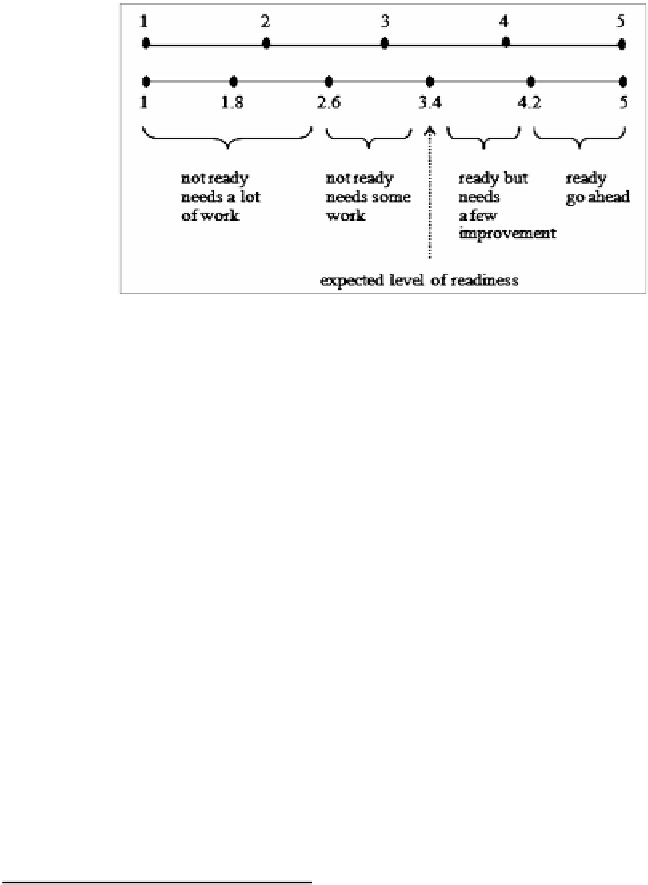Information Technology Reference
In-Depth Information
similarities and differences in the perception of academic staff and students of DIM
regarding to e-learning readiness.
Students reported their perceptions on 39 e-learning related items regarding the five
main components of e-learning readiness with a five-point Likert scale with 1 being
“strongly disagree” and 5 being “strongly agree”. Aydın and Taşçı's [18] identification
of “expected readiness” for e-learning (which was defined as the mean score of 3.40)
was used to interpret the results (see Fig. 2). Same scale was also adopted in the past
studies by Akaslan and Law [7], [11] and Soydal, Alır and Ünal [3].
Fig. 2.
E-learning readiness assessment model [18]
4
Findings and Discussion
DIM has a four-year undergraduate program and the distribution of the students
according to their first to fourth year was; 73, 38, 38 and 129, respectively. There
were also 33 students who were not able to graduate and had been studying in DIM
for five years or more.
The e-learning readiness survey was applied to all of the DIM undergraduate
students and 262 responses were obtained. In other words, our study represents the
opinions of 84% of our target audience. The majority of the respondents were female
(76%, n= 198
2
) and had personal computers (96%, n= 251). More than half of the
respondents had internet-connected smart phones (66%, n=172). There were only six
students who stated that they had neither personal computer nor smart phone out of
262 respondents (64%, n=167 of them had both).
The e-learning readiness survey has five main components that aims to reveal
“availability of technology” facilities, “use of technology”, “self confidence”,
“acceptance” levels and “training” needs of the respondents. Five-point Likert type
scores correspond to strongly disagree/never (1); strongly agree/always (5). Table 1
shows the students' opinions for each item and the overall score for the DIM students
in terms of e-learning readiness.
2
This also reflected the total distribution of gender out of 311 undergraduate students of DIM,
where 72% (n= 224) of the students were female.

Search WWH ::

Custom Search